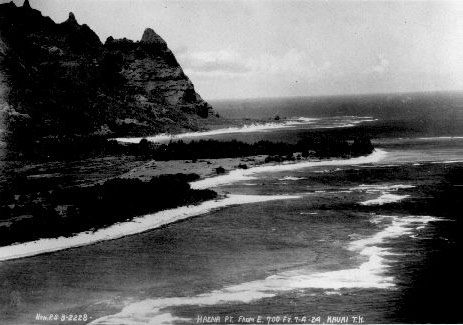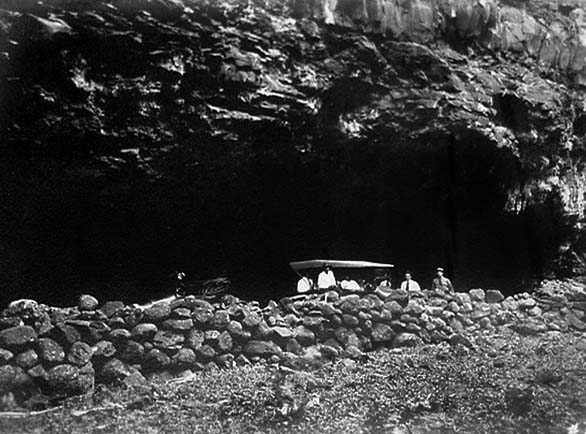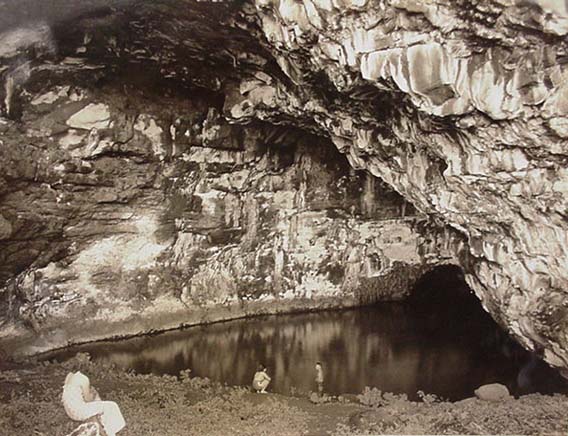 |
 |
 |
|||||
|
|
|
|
|
|
|
|
|
|
|
|||||||
| |
|
|
A 1924 photograph of Ha‘ena show the lowland area is still free of forest.
|
Famed for its beauty, it's cultural importance, and its geographic isolation, Ha‘ena received many noted visitors. First among these would be Queen Emma, widow of King Kamehameha IV (Alexander Liholiho). In 1871 she came to Kaua‘i, a visit most famous for her trek into the Alaka‘i Swamp atop Wai‘ale‘ale mountain. But in Ha‘ena she is remembered for being celebrated with the last exhibition of fire-throwing ever done from Makana mountain. Less noble visits came in the form of scientists and officials, whose encounters with local inhabitants sometimes demonstrate the cross-cultural differences between Hawaiian and non-Hawaiian perceptions characteristic of the period. Several records show in particular the different perceptions these outsiders and non-Hawaiians had of the famous caves at Ha‘ena.
|
||
|
|
||
|
Judge G. Gilman visited the caves in 1845 accompanied by Rev. Mr. Johnson and 20 or more Waioli school boys. He wrote the following description of Wai-a-Kanaloa:
|
||
|
|
||
"Cars at cave, Ha‘ena," early 1900s.
|
Eric Knudsen, of a prominent Kaua‘i ranching family, visited the caves with his friends in 1895. Here is his story:
|
||
|
|
||
|
An even more distinct change in attitudes towards these caves comes in the form of a license application from the Kaua‘i Civil Defense Agency, dated December 10, 1962, to make Maniniholo Cave into a fallout shelter for use in the event of an air raid:
A license was drawn up but apparently not signed. Fortunately, a fallout shelter has never been needed.
|
||
|
|
||
| |
| |
|
|
 |
| Ha'ena Home | Map Library | Site Map | Hawaiian Islands Home | Pacific Worlds Home |

|
|||
| Copyright 2001 Pacific Worlds & Associates • Usage Policy • Webmaster |
|||






